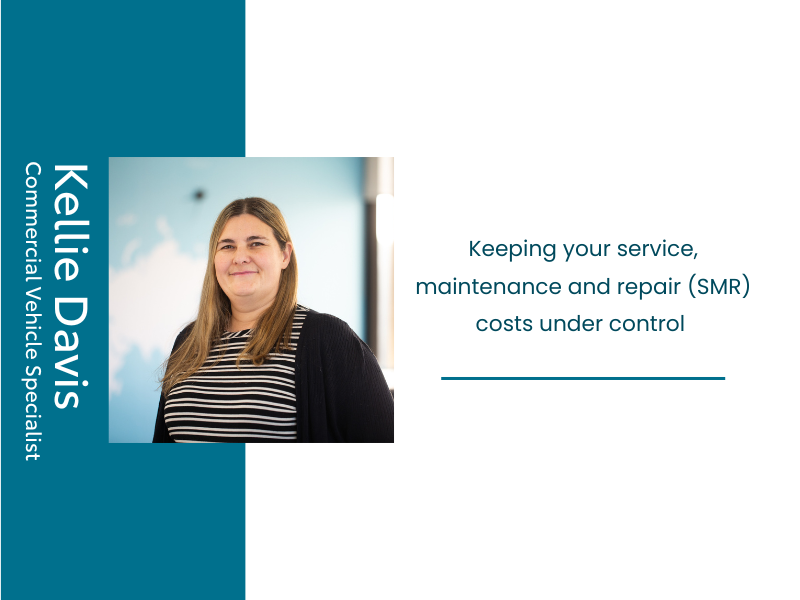Regular inspections can help you identify problems before they become serious issues for which the repair costs are likely to be much more expensive and you may face longer unscheduled vehicle downtime. Ensure you book in advance for scheduled maintenance to get a timely booking.
23rd December 2022
Keeping your service, maintenance and repair costs under control

The ongoing challenges affecting the automotive industry have left many fleets struggling to get new vehicles delivered on time. The war in Ukraine, Covid-19 pandemic and shortage of critical parts and components are some of the main factors contributing to longer lead times, likely to persist through 2023, into 2024, according to experts.
Many fleets had no option but to extend the contracts of their current vehicles which can affect their service, maintenance and repair (SMR) costs.
With this in mind, we asked our Commercial Vehicle Specialist, Kellie Davis, to list a few tips on how to keep your SMR costs under control.
This can help extend the life of your vehicles and reduce the need for repairs. They are more durable and less prone to failure, which means they should last longer. Using high-quality parts may also reduce fuel costs and other operating expenses as they could help improve the overall performance and efficiency of the vehicles.
Telematics can help track vehicle performance, identify problems and optimise routes. Telematics can monitor your vehicles and in some cases predict when it’s time for regular maintenance with more advanced systems sending data straight from the vehicle to warn of vehicle faults. These early alerts will identify potential issues to allow early repairs that will save you time and money.
You’ll also be able to obtain information regarding driver behaviour such as harsh breaking or speeding which can help you address these and save on maintenance, repair costs and fines.
EVs, for example, have significantly fewer moving parts which means there are less things requiring maintenance. EVs also use regenerative braking which converts kinetic energy back into electricity, meaning that there’s less brake wear than ICE vehicles. And let’s not forget about the fuel cost savings that can be made!
Also, consider driver training if you switch your drivers from ICE vehicles to EVs. This will teach drivers how to drive to improve the range of the vehicle, which again can save you time and money.
Encourage your drivers to regularly check the vehicles and if there are any issues to report them straight away. This can help identify problems early on and prevent further complications, as well as ensure the vehicles are safe and compliant.
It’s not only dangerous to overload your vehicles but extra weight puts added pressure on the brakes, tyres and suspension. If you have an on-board weighing system fitted, make sure it is calibrated and your drivers don’t ignore the warnings. Consider having bulky or heavy parts and equipment delivered to site if possible.
Overloading decreases the vehicle’s range, whether it’s an EV or ICE, so the question is do I really need to be carrying everything everywhere?
While taking preventative steps to reduce SRM costs, having the right breakdown cover is also important.
Ensuring your vehicles can be fixed roadside or recovered to a garage promptly and without the costly fees of calling a recovery company, can save you both money and stress!